PRODUCT LIST
What high-density, mission critical data centers should look for in a compact UPS

Data center density and power requirements are going up. As a result, more and better backup power is needed. Many data centers, however, have only limited space available. A very compact and powerful uninterruptible power supply (UPS) can often remedy the situation. To choose the right one, small and medium-sized data centers must consider cooling, redundancy, efficiency, architectures, and more.
New applications such as high-performance computing and artificial intelligence are shaping the design and operation of small and medium-sized data centers. As energy prices rise and budgets tighten, more efficient operation is necessary. One way to reduce costs, save space, and lower energy consumption is to put more IT resources into each rack.
But this creates challenges. Additional UPS requirements can cause floor space constraints unless the density of the deployed UPS keeps pace with the new IT equipment it supports. Data center architecture also influences the capabilities a UPS system should offer. Consequently, choosing a backup power solution for high-density applications requires consideration of the technologies in both the data center and the UPS.
HPC, AI, and density
Big data analytics, machine learning, and AI are forcing data center power infrastructure to adapt. High performance computing (HPC) platforms usually include GPUs and CPUs working in parallel to handle these new workloads. This can mean new racks full of high-end GPUs that excel at floating point calculations for applications such as medical diagnostics. Per-rack density rises dramatically with HPC, up to 20-30 kW and more. Over 50% of respondents in the survey “The Infrastructure Imperative” conducted by 451 Research reported operating high-density HPC data center infrastructure.
Converged and hyperconverged infrastructure
Converged infrastructure (CI) and hyperconverged infrastructure (HCI) are two further trends we are seeing alongside—and in some cases in combination with—HPC. These architectures do not impact density so much but they have implications for the reliability required of a UPS system.
CI is usually seen as large rack-scale platforms that merge compute, storage, and networking as a complete solution. HCI, on the other hand, is available as 1U or 2U rack units that include a multi-core server and a local storage array. The main architectural difference is that in CI, storage attaches directly to the physical server. HCI, in contrast, shares storage across all virtual machines (VMs).
As much as half of data centers are now using hyperconverged infrastructure. In these virtualized, high-density IT environments, a power outage can have a much wider impact than it would in a non-converged environment. Consequently, the reliability of the UPS and features such as +1 redundancy operation are crucial in these scenarios.
Power as a major cause of downtime
The most frequent cause of data center outages is power—by a considerable margin. A study by the Uptime Institute claims that 37% of outages are caused by power issues, while the next-most-frequent cause (software and IT systems) is only to blame for 22% of such incidents.
One phenomenon that may be contributing to these outages is “creeping criticality”: this can occur when infrastructure silently crosses the threshold of criticality due to increasing resiliency needs while power infrastructure remains unchanged. Rising density caused by the gradual implementation of more HPC or HCI can produce this type of situation.
And data center downtime is costly: over 10% of recent incidents resulted in costs of over $1 million. All the more reason to examine UPS requirements closely.
The right type of UPS for mission critical data
The three major types of uninterruptible power systems available today are standby, line interactive, and online. The first two may involve limitations in the way that they correct power quality anomalies from the supply such as long switchover times (25ms) in the event of an outage, which disqualifies them for most mission-critical applications in small and medium-sized data centers.
An online double conversion UPS such as the new 5-20kVA Amplon RT models from Delta, however, has no switchover time at all. These devices take grid power, convert it to DC power to charge their batteries and then convert the power from the DC bus back to AC to power IT loads. The huge advantage here is that power is always already coming from the DC bus; if power from the grid is disrupted, no switchover is required. The batteries also serve to buffer transients and any voltage drops, resulting in very clean power.
A UPS system that offers parallel operation can provide longer run times. Even more crucially, it ensures that power is still available if one of the UPS units or battery strings in the configuration fails. It is often referred to as +1 redundancy when two UPS systems are running in parallel. Multiple UPS systems configured in parallel is known as an N+1 architecture, with N denoting the number of UPS systems required to handle the load and the +1 as backup in the event that one of the N units fails. A parallel UPS setup is highly beneficial for mission-critical applications in fields such as banking, manufacturing, and healthcare, where unexpected downtime can have serious repercussions.
Batteries are an essential component of any online UPS, but they also have a limited life. Battery maintenance and replacement is inevitable at some point. Lithium-ion batteries, however, require less frequent maintenance, have a higher power density, and can easily provide twice the useful life of lead acid. That translates into needing to replace fewer batteries, which reduces costs — a key benefit for high-density data centers operating within tight cost constraints.
Bypass control lets the UPS be completely removed from the power distribution system. The ability to switch over to grid power and remove the UPS from the picture is critical in two cases: one, the UPS is defective, or two, it requires maintenance. A bypass allows the maintenance to take place with no disruption to the load. Without a bypass, the unfortunate situation can arise in which power from the grid is available, but the data center is offline because the downstream UPS is not functional.
Selecting the right vendor and product for high density
Having a global organization such as Delta Electronics that can deliver and service the required number of UPS systems practically anywhere in the world is a crucial advantage for data center operators. The new Amplon RT Series 5-20kVA from Delta, for instance, is a line of online double-conversion UPS systems that provide a wealth of features for enhanced resiliency and class-leading density thanks to their compact 2U form factor.
This is a very beneficial combination for companies facing increased power requirements due to rising per-rack densities and limited floor space. The unity power factor, high system efficiency, hot-swappable batteries, and parallel configurations the RT series features also help resolve issues arising from higher densities. What’s more, the 5-20kVA is the first UPS on the market to offer lithium-ion external battery cabinets as standard. You can even replace a single battery instead of the entire string, while the bypass keeps systems online.
Other applications will benefit from the new RT Series UPS systems as well; edge computing installations, for instance, also have limited space available and serve mission critical applications in the manufacturing and telecommunications industries. Considering the power distribution box and maintenance bypass breaker are integrated into these units, a broad range of small-to-medium-sized facilities stand to benefit from their reliability and high efficiency.
▲ Delta Amplon RT series 5-20kVA UPS




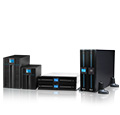

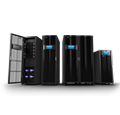
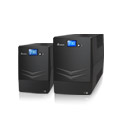
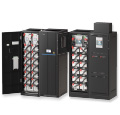
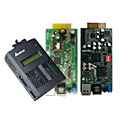

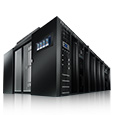


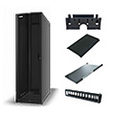
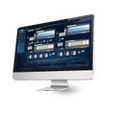
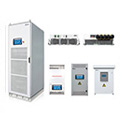
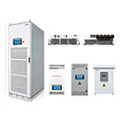



















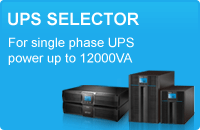
.gif)
